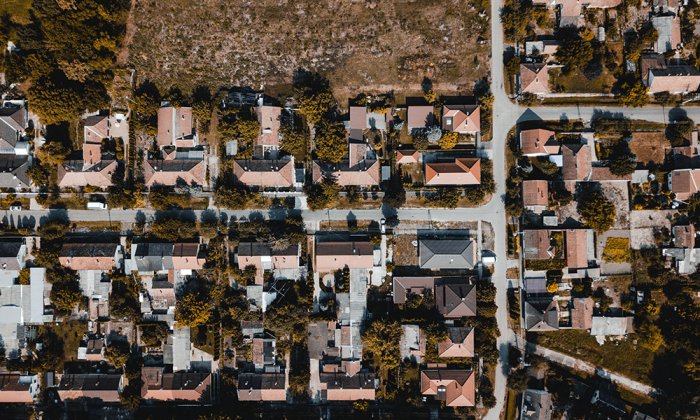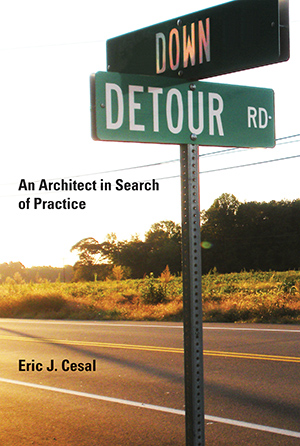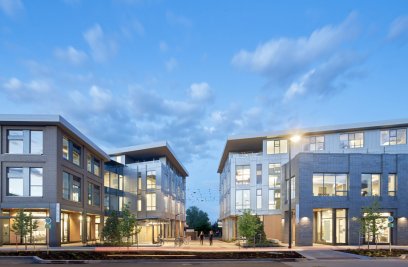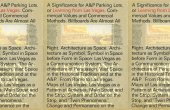Lessons From an Architect in a Time of Crisis

I wrote “The Green Architect” — a chapter of “Down Detour Road: An Architect in Search of Practice,” excerpted below — in 2009, shortly after the world watched the CCP dramatically curtail manufacturing and traffic around Beijing to improve air quality for the 2008 Olympic games. It was an odd phenomenon to watch: Could the world’s pollution merely be . . . stopped? Through state action? It needled at the idea that what was missing in our fight against climate change was simply the will to do something about it. Tesla had recently announced its entry into the electric vehicle market, and there was a sense that maybe hope was in sight — that the confluence of strong state action and inspired technology would save us from the coming climate catastrophe. It hasn’t. Nearly every environmental metric is worse, and the prospects for a normal future are essentially nil. While green design and green technology have made great strides, they haven’t successfully arrested our path towards a chaotic climate future. Why not?
“The Green Architect” describes an evergreen problem: The faster the acceleration in “green” technology, the greater the impetus to replace older, less-efficient models of everything. The more we replace everything, the greater the toll on Earth’s finite resources, and the more junk we commit to the landfill. Our faith in green technology, therefore, is easily misplaced. We can’t solve the climate crisis by replacing our cars, computers, and buildings every few years — even by replacing them with the greenest technology yet invented. Back in 2009, I wrote “the greenest building is the one we don’t build.” The same could be said of thumb drives, cars, clothing, roads, and all the rest. And while we can’t (and shouldn’t) arrest the march of technology, we can change what we value about it. We can value innovations because we know they will work 50 years from now, not because they work 10 percent better than what we had last year.
I don’t have much of an eco-footprint. It’s not because I’m an eco-saint. I like to think of myself as incidentally green. I don’t drive a car, because I can’t afford the insurance or the maintenance. I don’t pay much for utilities, because I’m not home that much. I also don’t have many appliances, other than my laptop and my George Foreman grill. I sold most of them on Craigslist at one point or another to pay some bill or get some extra cash. I don’t own a TV, or a watch, or a stereo. I tend to walk everywhere or take public transportation, because I usually find that I have a lot more time than money. I reuse old coffee cans as flowerpots, because flowerpots break and old coffee cans have an agrestic quality that appeals to me. What I’ve found is that when you don’t have any money, you don’t do very much. When you don’t do very much, you tend not to have much of a footprint — ecological or otherwise. Being unemployed has made me green.

I can’t escape the idea that to be more green, we just have to do less. As Americans, we have built a culture on using more than we need. Living in larger houses than we need, eating more than we should, driving more than we should, building more than we should, etc. It is this consumption that is at the root of our ecological problems.
Therefore, we may make the best impact through inactivity.
Doing less, as a phenomenon, ran particularly strong in the post-Katrina South. It was the “less” of the landscapes that grabbed my attention. Everything there was as it was pre-storm, less what it was supposed to do. So you had an auto shop, but no cars were being sold. You had a home, but no one lived there. A golf course where no one played golf. And a gas station that didn’t serve gas. And yet all of these places were not inactive—they were alive with activity of the incidental and accidental kind.
The golf course had returned to nature. Wild grasses and weeds competed for open land. The only mark of civilization was the beginning of a tree house, built by a volunteer during a brief break. The course had become all rough.
We must do what is best for our environment, even when that sometimes means doing nothing at all.
The empty houses were basically functioning mold laboratories. And yet, at the very least, they served to inspire volunteerism, so maybe that’s what they were actually growing. And the gas station had a small market, and functioned as a local meeting place. Amid swirls of dust, people chatted about who saw who do what. Unremarkable, except when you consider that the pools, the beaches, the pubs, and the traditional venues for socializing were in short supply. At the gas station, there was plenty of shade and beer and conversation.
This is an important design question. Designers spend effort trying to torture our physical environment to perform some function, to serve some purpose. Post-Katrina, with that purpose stripped away, new functions developed incrementally, passively, naturally.
All of this has troubling implications for architecture, to be sure. In many ways, the greenest building is the one we don’t build. Fundamentally, we don’t want to sit on the sidelines as our built environment returns to nature. We want a hand in how the environment is shaped, and are disinclined to approach the issue passively. We must engage green architecture with the conviction that our efforts are superior to what would occur passively. But we must root those convictions in honesty and openness — not in supposition and conceit. We must do what is best for our environment, even when that sometimes means doing nothing at all.
Like citizen architecture, green architecture is an opportunity for the architecture profession to help the world with its problems. Or at least to stop creating new ones. It is much more than just a trend or a fringe aspect of architecture. And it extends beyond just a technical adaptation or an embrace of new materials.
Green architecture is a sea change in architectural theory. It changes the priorities of what we do. Instead of examining questions or problems that are philosophical, or intellectually provocative, we are now looking at problems that are urgent and global. Like citizen architecture, it is something only we can do.
The origins of the green movement, in its widest sense, can be traced to Rachel Carson’s seminal 1962 text “Silent Spring.” Other events serve as milestones in tracing the evolution of green theory: the first Earth Day in 1970, the Kyoto protocol in 1997, etc. When, exactly, architects began to pay attention to such issues is of considerable debate. As much trouble as architects have in defining “design,” they find defining “green design” even more difficult.
A full definition, therefore, will remain elusive. To understand how green architecture relates to architectural empowerment, however, we would be wise to at least define what green architecture is not.
The most widely accepted definition of sustainability was conceived at the United Nations Brundtland Commission in 1989 and reads: “[to meet] the needs of the present without compromising the ability of future generations to meet their own needs.”
According to the UN, then, sustainability seems to be about meeting needs. We can believe that a “green” building is one that satisfies the needs of the present without imperiling the needs of the future. But whose needs? The needs of the client? The architect? The public at large? The spotted owl that lives in the forest where the flooring is harvested? Some architects would say “all of the above.” But the plain truth is that in most scenarios, someone’s needs come first. Depending on who your architect is and who your client is, someone may be getting the short end.
Perhaps it is easier to look to the specific language of the Brundtland Commission: “. . . without compromising the ability of future . . .”. The Commission makes no claim to be meeting the needs of future generations; it does not stipulate that it is squirreling away clean air or clean water or anything specific. It does not even appear to be taking a position on whether or not those future generations will rise to meet their own needs. It merely declares that we shouldn’t act in a way that precludes them from doing so.
To understand this in architectural terms, we might speculate that “sustainability” means designing in such a way that we do not imperil the future fortunes of three parties: future architects, the client, and the community at large.
Intuitively, this seems correct. We would never consciously design a building that would fall apart in three years. We know that regardless of what we might be doing in three years, or where the world may take us, it is probably to our advantage that that building is still standing. It is certainly to our client’s advantage that the building stay up as long as possible. Similarly, we would not design a building that looks good on opening day and then fades aesthetically. Designers give careful thought to how materials age — they may select copper knowing that the patina which will rapidly take hold is the look they are going for. A designer may eschew untreated concrete because he or she knows that subsequent staining may spoil a meticulously crafted image. So, technologically, we would want to design in a way that does not imperil our future reputations.
Aesthetically, we face similar issues. A designer may engage a new and revolutionary material out of critical or intellectual curiosity; or perhaps because a newly invented material offers new possibilities. Whatever the case, it can work out very well for the architect. We can look back on that designer and say, “What a daredevil! Look how he explores!” Le Corbusier and his whitewash and Gehry with his chain link fencing were separated by a couple of generations, but both gained fame through adventurous choices. We recall them as the first to make such choices. Notably, these choices do not prevent future generations from making similarly adventurous choices. Formal choices, as well, are easily outdone. A decision to make a building in the shape of a seahorse does not directly bind future generations of architects in any way.
The client’s future becomes bound much more easily. Future generations of designers seem fairly unencumbered by a particular design choice, but future generations of clients, or neighbors, or the general public will continue to be affected until the building is taken down. If a school is designed with poor natural lighting, the school district may be burdened with additional energy costs for the life of the building. Every generation that moves through that school will be similarly affected. Every taxpayer that lives in that district will be affected. A designer’s choices have become binding in a very real way.
Buildings should not be subject to fleeting trends or inspired by flash-in-the-pan ideologies.
The similarities between green architecture and citizen architecture here start to emerge. They both require a heightened sense of awareness on the part of the designer. They both ask the designer to take responsibility for how the client and the community are affected, not just in the honeymoon period but in perpetuity. We must design in such a way that a building can be a source of continued value for the client and the community at large far into the future.
This is easier said than done, because the mechanics of the profession as it is currently organized work against such long-range thinking. Architects are rewarded for making something new — for departing from what has been established and proven workable. Any notable architect achieves his or her position in the canon specifically by diverting from an existing dialog. Moreover, that position is evaluated and secured at a single point in time; the reactions of subsequent generations are typically not controlling in the evaluation of an architectural work. We may regard a 50-year-old building as something ugly and dated, but still celebrate the architect who designed it because at the time it was a bold gesture.
This raises an obvious question: If a designer designs a building that is formally or aesthetically trendy for his own generation, what happens in the next generation, when the trend fades? What is the owner left with? A dated building that is as awkward to own as a mood ring is to wear? If the building in question is a home, is the owner left with a resale option? Is the owner’s equity destroyed because the architectural trend that inspired the building has passed and now no one can be convinced to buy it? This issue is perhaps more confusing now than ever before. For most of human history, historicist forces in architecture ensured that the architect’s primary duty was to reference the past, thus ensuring some measure of continuity between the generations. In an era when every generation’s ambition is to part from the past, how do we make sure that we allow for future generations’ needs — when the only certainty is that they will be actively trying to distinguish themselves from us?
Perhaps it is enough to say that, rather than trying to decipher the “then,” we will just try to deemphasize the “now.” Buildings should not be subject to fleeting trends or inspired by flash-in-the-pan ideologies; as put (ironically) by Daniel Libeskind: “When we talk about sustainability, it should be seen as something genuine, not trendy or technically gimmicky.”
We should not design our buildings to reflect the Me Decade, or any decade, because we want our buildings to be meaningful and useful in the next decade. We want future generations to have some use for them, rather than have them just stand as cultural markers of our own particular moment in time.
Green architecture, then, would seem to lend itself to conservatism: The safest way to achieve its goals is to stick with what has proven to be workable and generally tolerable. To design in such a staid way is problematic for two reasons:
• It runs counter to the mechanics of fame and success in our profession.
• It runs counter to the march of technology.
To the first point, we must find a way to make the mechanics of success of an individual gel with the mechanics of success of the profession. As I have said, we have, for too long, believed that the success of a few individuals necessarily translates into a strong and healthy profession. The fallout from the Great Wake suggests that this is not true. When the public at large understands that sustainability is a core value to all architecture, and that architects take seriously their role in this crisis, we all benefit. If the public suspects that architects are using the issue of sustainability as a gimmick, to advance their own portfolio and dabble in new technologies, the public will be understandably suspicious. We must consider architecture in such a way that doing the right thing is more lauded than doing the new thing. We will always be called upon to do things in new ways — shifting times and technology demand it — but we must give up the idea of newness for its own sake. Only then can a real discussion of sustainability be had.
To the second point, such a contradiction can be resolved by considering a simple piece of technology: my USB thumb drive. I got my first one a few years after college. It had 128 Mb of memory and cost almost $100. I can’t remember all the USB drives I’ve had over the years, but I do know that they have steadily achieved more and more memory. They have also become less and less expensive, when considered in terms of dollars per byte of memory. My current one (which is now at least 18 months old) provides 2 Gb of memory and cost me around $30. At what point do I decide to replace it? I consider two factors: the advance in technology and the drop in price. If I were to buy the most advanced, highest-memory thumb drive I could find, I would do so with the knowledge that it would only remain state-of-the-art for a brief time. The curve of technology is accelerating, and making a purchase represents an act of “getting off the train.” Thumb drives will continue to have more and more memory, but the one that you have has the same memory capacity as it did the day that you bought it. Therefore, a “tech gap” between what is state-of-the-art and what you own is always widening.
If the public suspects that architects are using the issue of sustainability as a gimmick, to advance their own portfolio and dabble in new technologies, the public will be understandably suspicious.
The falling cost of a technology is also an incentive for me to replace my thumb drive. We have all experienced the heartache of buying some new piece of technology and watching, sometimes over a period of only months, as the price dropped and dropped. If I paid $30 for a 2 Gb drive a year ago, and now a 4 Gb drive is available for $15, it makes a compelling argument for replacement, even if the old one is still working fine.
Because the “tech gap” is always rising and the price is always falling, there is always a distinct calculable point at which these two lines intersect. At this point, it makes more sense for me to replace my thumb drive than it does to hold on to the last one. Eventually, technology always inherently demands its own replacement.
This has been an oversimplified example. Our purchasing (replacing) decisions are never strictly a matter of cost and technology, but also involve fashion, market externalities, consumer price index, etc. However, the example adequately illustrates how chasing state-of-the-art technologies can inspire us to replace our possessions at a rate that defeats any efforts at sustainability.
For this reason, a faith in green technology is easily misplaced. We might design a high-performance building that represents the peak of current technology, but we have to acknowledge that the technologies themselves rapidly lose their state-of-the-art status and correspondingly their value. The greater the divergence between our high-performance building and the state of the art, the higher the pressure to replace the building.
Such a phenomenon suggests that a faith in “green” might be more appropriately based on passive technologies. The sun will likely follow the same arc 100 years from now as it does today. The winds will blow generally in the same direction. Utilizing technologies dependent on sun and wind ensures that the benefits of our design decisions endure over the long term, rather than being undermined by economic and technological phenomena.
John Ruskin believed that “a building cannot be considered as in its prime until four or five centuries have passed over it.” In his time, such an approach might have worked. The times changed much more slowly. These days, such a long time scale may be wishful thinking, especially considering the aforementioned accelerating pace of technology. Indeed, such foresight may be impossible unless we are current or future historicists. But we can make certain decisions that allow for future generations to also make fruitful decisions. We can design with materials that, after the building has served its useful life, can be taken down and reused. We can design around ideas and events that are lasting, not short-term cultural phenomena. We can design buildings around “existentially grounded plastic and spatial experience,” to quote architect Juhani Pallasmaa, rather than “the psychological strategy of advertising, of instant persuasion, [where] buildings have turned into image products detached from existential sincerity.”
We can design buildings to last, rather than defaulting to a 30-year useful life estimate. Above all we can culture an awareness of how our buildings will affect the future — architecturally and ecologically. We can elevate durability over technology.
Eric J. Cesal is a designer, writer, and noted post-disaster expert, having led on-the-ground reconstruction programs after the Haiti earthquake, the Great East Japan Tsunami, and Superstorm Sandy. He is the author of “Down Detour Road,” from which this article is excerpted.




